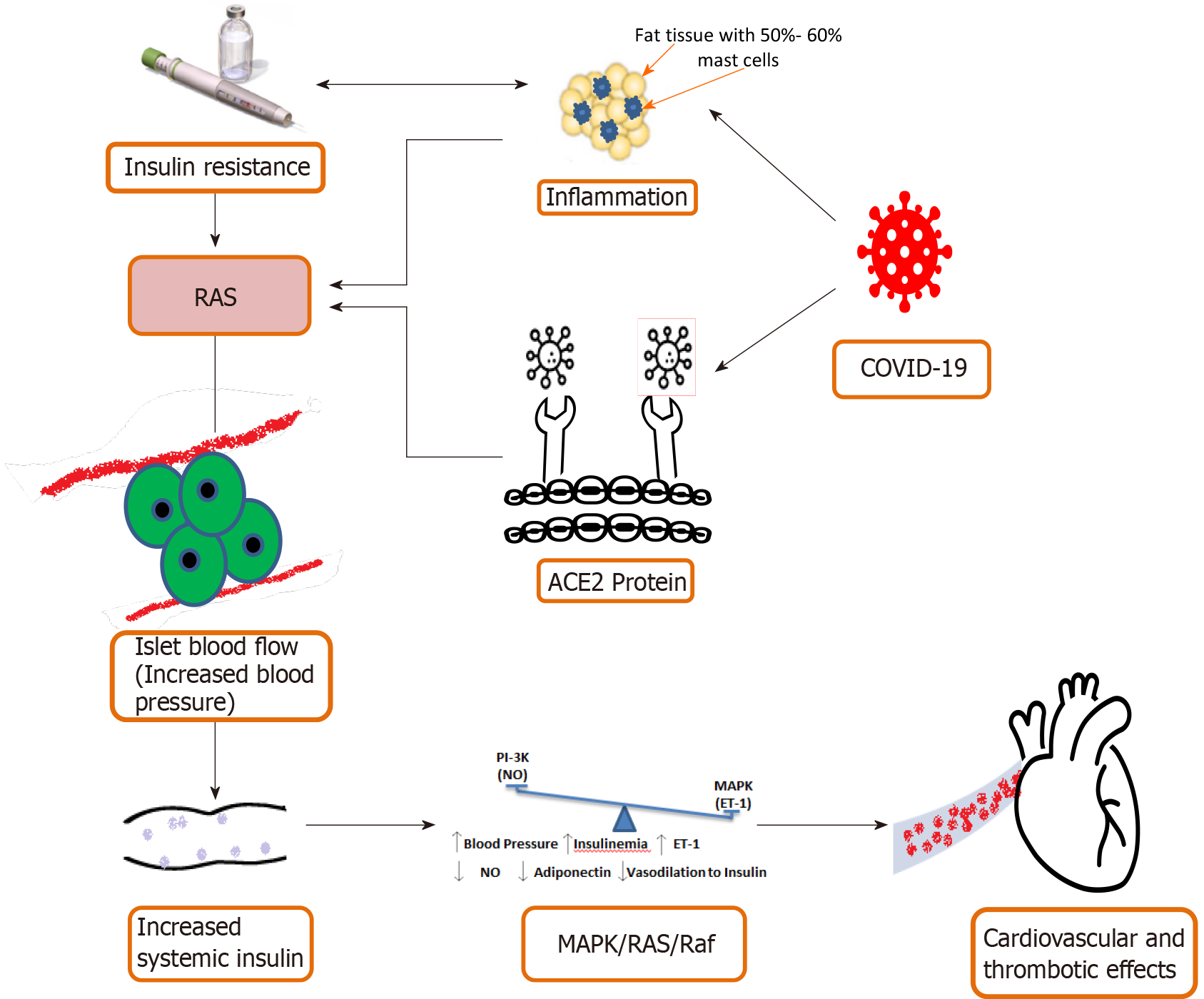Copyright
©The Author(s) 2021.
World J Diabetes. Sep 15, 2021; 12(9): 1550-1562
Published online Sep 15, 2021. doi: 10.4239/wjd.v12.i9.1550
Published online Sep 15, 2021. doi: 10.4239/wjd.v12.i9.1550
Figure 2 Inflammation linked to elevated insulin concentrations via portal circulation is one hypothesis that may help explain why patients with diabetes likely than others to develop extreme types of coronavirus disease 2019 diabetic patients[31,56].
The angiotensin converting enzyme (ACE) Protein is used by the severe acute respiratory syndrome coronavirus 2 to enter the host. The pathogenesis of diabetes is linked to hyperactivity of the renin-angiotensin system (RAS) pathway caused by increased reactive oxygen species (ROS). In order to maintain insulin secretion, ACE2 can modulate blood flow and morphology in the islets. A higher level of circulating insulin changes the balance from vasodilator to vasoconstrictor effects, disrupting cardiovascular homeostasis and increasing the risk of thromboembolism and multiple organ failure. COVID-19: Coronavirus disease 2019; MAPK: Mitogen activated protein kinase. Citation: Shah P, Lueschen N, Ardestani A, Oberholzer J, Olerud J, Carlsson PO, Maedler K. Angiopoetin-2 Signals Do Not Mediate the Hypervascularization of Islets in Type 2 Diabetes. PLoS One 2016; 11: e0161834. Copyright© The Authors 2016. Published by Open Access Article. Muniyappa R, Montagnani M, Koh KK, Quon MJ. Cardiovascular actions of insulin. Endocr Rev 2007; 28: 463-491. Copyright© The Authors 2007. Published by Oxford University Press.
- Citation: Gangadharan C, Ahluwalia R, Sigamani A. Diabetes and COVID-19: Role of insulin resistance as a risk factor for COVID-19 severity . World J Diabetes 2021; 12(9): 1550-1562
- URL: https://www.wjgnet.com/1948-9358/full/v12/i9/1550.htm
- DOI: https://dx.doi.org/10.4239/wjd.v12.i9.1550









